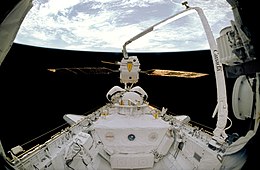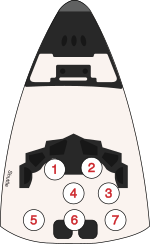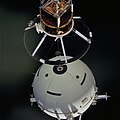 | |
| Names | Space Transportation System-46 |
|---|---|
| Mission type | EURECA satellite deployment TSS-1 operation Technology research |
| Operator | NASA |
| COSPAR ID | 1992-049A |
| SATCAT no. | 22064 |
| Mission duration | 7 days, 23 hours, 15 minutes, 2 seconds |
| Distance travelled | 5,344,643 km (3,321,007 mi) |
| Orbits completed | 127 |
| Spacecraft properties | |
| Spacecraft | Space Shuttle Atlantis |
| Launch mass | 116,134 kg (256,032 lb) |
| Landing mass | 94,676 kg (208,725 lb) |
| Payload mass | 12,164 kg (26,817 lb) |
| Crew | |
| Crew size | 7 |
| Members | |
| Start of mission | |
| Launch date | July 31, 1992, 13:56:48 UTC (9:56:48 am EDT) |
| Launch site | Kennedy, LC-39B |
| Contractor | Rockwell International |
| End of mission | |
| Landing date | August 8, 1992, 13:11:50 UTC (9:11:50 am EDT) |
| Landing site | Kennedy, SLF Runway 33 |
| Orbital parameters | |
| Reference system | Geocentric orbit |
| Regime | Low Earth orbit |
| Perigee altitude | 425 km (264 mi) |
| Apogee altitude | 437 km (272 mi) |
| Inclination | 28.46° |
| Period | 93.2 minutes |
| Instruments | |
| |
 STS-46 mission patch  Standing: Ivins, Nicollier, Hoffman, Chang-Díaz and Malerba Seated: Allen and Shriver | |
STS-46 was a NASA Space Shuttle mission using Atlantis and was launched on July 31, 1992, and landed on August 8, 1992.









